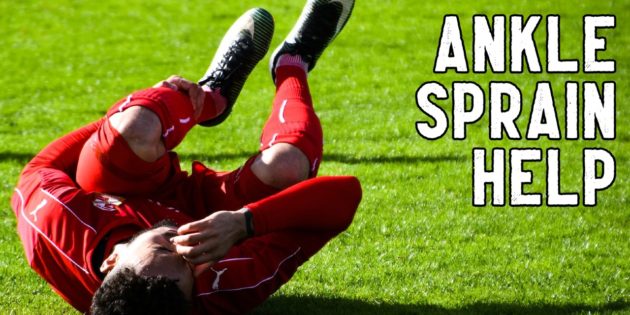So you twisted your ankle really bad and now it’s swollen & painful & stiff and you’re bummed out because you can’t exercise, play, or enjoy your usual lifestyle, etc.
And you’re looking for some help/guidance about how you should handle your injury to make sure you get back to exercising, playing, etc. as quickly as possible.
You’re probably thinking (or at least heard from everyone and their grandmother) to just rest and ice it……and that’s exactly what NOT to do!
So, let me tell you the 3 things I recommend every person do after spraining their ankle:
1. Get Rid of the Swelling by Moving It (not ice)
Wait what…don’t ice it!? But that’s what everyone has said to do!
Well, it turns out that ice can actually DELAY healing of injuries. It can delay healing because it constricts all bloodflow into and out of the area….and bloodflow is what helps bring in the good, healing stuff to an injured area and remove the bad stuff. So ice doesn’t promote healing or help reduce swelling.
Even the doctor who first coined the “RICE” acronym (rest, ice, compression, elevation) in the late 70’s admitted ~5 years ago that he got it wrong – that rest and ice can delay healing.
So if you want to help your ankle sprain heal as quickly as possible, don’t ice it. What should you do instead? MOVE IT.
When I say move your ankle, I mean to actively move it around and help “pump” bloodflow into and out of the area. If you keep your foot completely still and don’t move it, swelling will just pool in your foot/ankle (and that black & blue will last even longer)
What I tell my clients to do is to spell out the alphabet (uppercase & lowercase) with their toes 5-10x day. This is a simple way to make sure you’re moving your ankle in all directions.
And if you want to maximize the effect of moving your ankle around and help reduce the swelling even more, then I recommend moving your foot back and forth with a mobility band wrapped around your foot/ankle. You could also spell out the alphabet.
Check out the video below to see what I mean:
2. Dorsiflexion Stretch
After you sprain your ankle, it will feel stiff/painful in just about every direction, but there is one direction that gets the most stiff/limited and that is pulling your foot up towards your body (aka dorsiflexion).
The best (and most comfortable) way to stretch your ankle this way is with the half-kneeling dorsiflexion stretch:
If your ankle is really stiff, then do the stretch without your toes on a 1-2″ block.
I recommend my clients do this stretch 20x and repeat it 4-5 x day. And I tell them to not push into any significant pain; a little discomfort is ok, but no sharp pains.
3. See a Sports Physical Therapist
While you might think an ankle sprain is an injury that just heals with time, will just get better on its own or that you can figure things out by yourself via “Dr. Google,” I have seen waaaay too many clients who tell me their ankle is “fully recovered” but when I take a quick look at it, it clearly isn’t.
The all-too-common scenario I see just happened again 2 weeks ago. A client came to see me for knee pain when she runs. After talking with her, she mentioned she rolled her ankle a few months ago but “it’s all healed now.” Which to her meant no pain. But when I checked out her ankle, it still had limited mobility (in dorsiflexion) and that limited mobility was causing her knee to move differently when running and thereby increasing the strain in her knee…. causing her knee pain.
A sports physical therapist is specifically trained to treat injuries such as ankle sprains and get people back to exercising, playing sports etc…..quickly and safely.
So please don’t downplay the significance of your ankle sprain and think it will just get better on its own (it likely won’t). Find a sports physical therapist and work with them to develop a plan to get you back to your active lifestyle without worry!
If you do those 3 things after your ankle sprain, you will give yourself the best chance of having a quick and full recovery.
